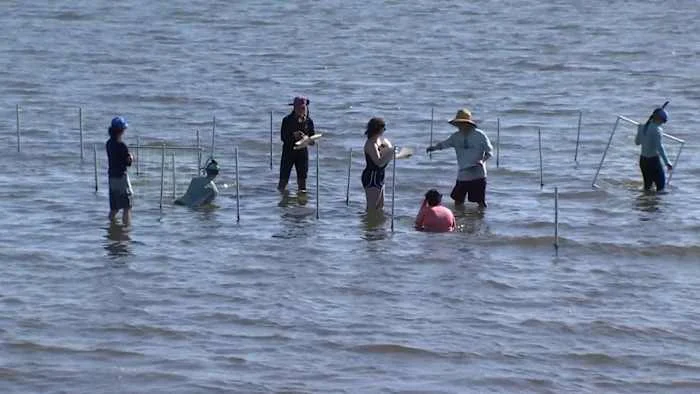
Brevard Zoo’s Innovative Seagrass Restoration Initiative
In a groundbreaking move for aquatic conservation, Brevard Zoo’s Restore Our Shores team has celebrated the successful planting of nursery-grown seagrass in the Indian River Lagoon, marking a significant milestone in marine restoration efforts.
For nearly two years, scientists and conservationists have been dedicated to monitoring and planting seagrass, essential for maintaining healthy marine ecosystems. Until recently, the seagrass used for planting was sourced from commercial nurseries across Florida. However, the team’s new initiative aims to cultivate seagrass directly within their own nursery, which opened its doors in 2023 through a partnership with the Hubbs-SeaWorld Research Institute in Melbourne Beach.
During a recent planting event at Shore Side Park, volunteers and Restore Our Shores team members engaged in the challenging task of placing seagrass, specifically Halodule wrightii or shoal grass, into the lagoon's waters. Conservation Restoration Coordinator Vonn Schneider described the process: "They just started monitoring the second bed, which means we can start bringing out the grass planting units." The anticipation in Schneider’s voice emphasized the importance of this restoration effort, as declining seagrass populations have severely affected the lagoon's ecosystem.
Remarkably, during the activities, the team discovered a rare flowering event in the nursery—a significant development that could provide seeds for future restoration projects. Schneider excitedly noted, "Finding the male Halodule flowers is a big win for us. This could greatly enhance our restoration efforts in the long run." Such flowering events are uncommon in commercial nurseries, making this discovery particularly impactful.
The Indian River Lagoon has seen a staggering loss of over 90% of its seagrass since the 1970s, mainly attributed to pollution and stormwater runoff. Jeff Eble, Florida Program Director for Hubbs-SeaWorld Research Institute, stressed the urgency of these restoration efforts, stating, "Just waiting for the lagoon to heal itself isn’t going to be enough." His emphasis on action highlights the commitment needed to restore this vital ecosystem.
Seagrass beds play a crucial role in marine environments, serving as habitats for various species and stabilizing sediments while filtering excess nutrients from the water. Schneider pointed out, "Seagrass is a keystone species because so many things depend on a natural seagrass bed." These characteristics underline why the recent developments at Brevard Zoo's nursery could have city-wide implications for marine health.
As the team embarks on further monitoring and documentation of their seagrass plantings, there's hope that these efforts will not only revive the Indian River Lagoon but set a precedent for marine conservation projects around the globe. Could this initiative inspire similar programs in other regions? We invite your thoughts on how communities can contribute to protecting our precious marine ecosystems.